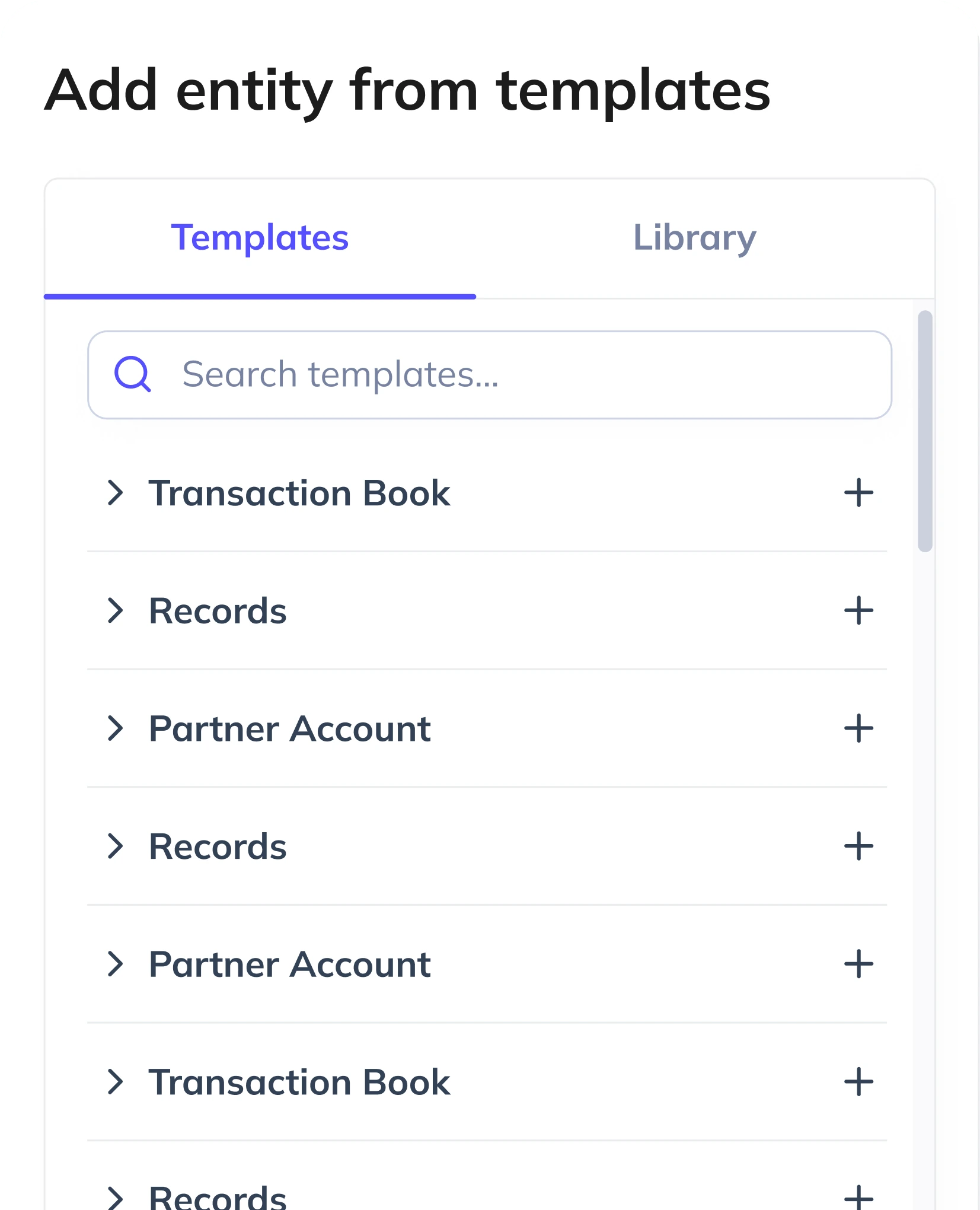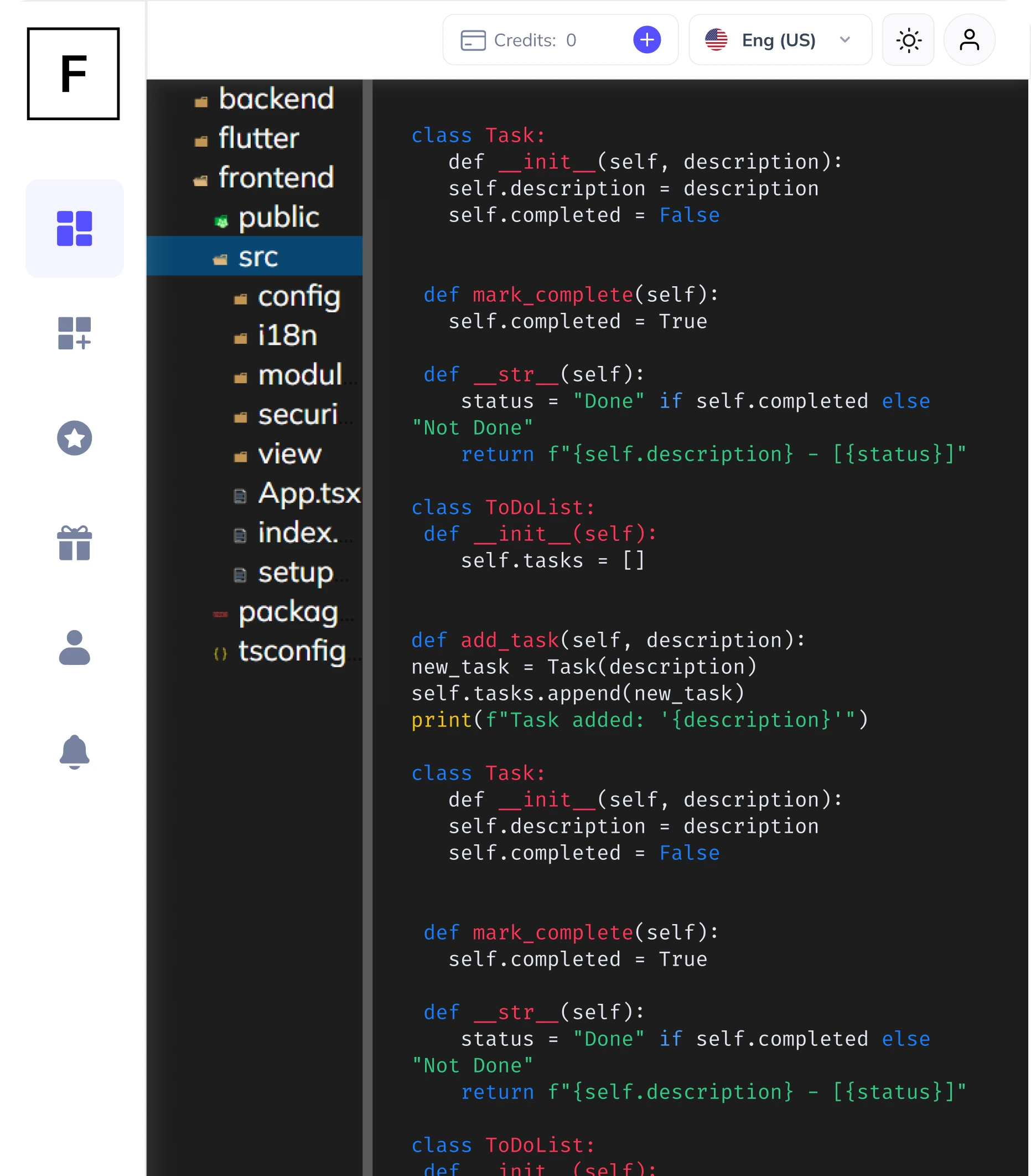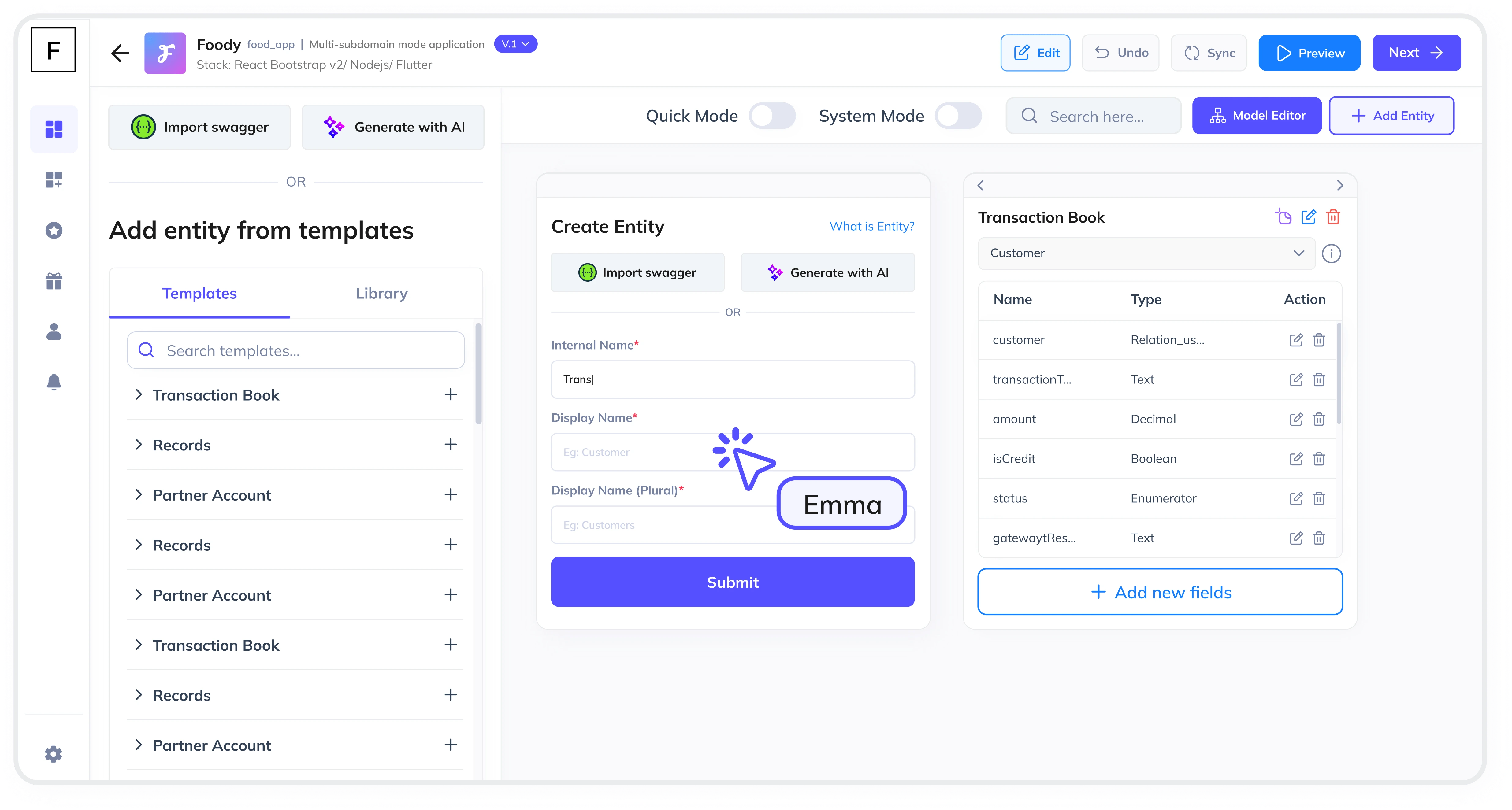Summarize and analyze this article with:
For scaling enterprises, outdated legacy systems and spaghetti code can be a major roadblock to growth. FAB Builder offers a solution with its structured modular code architecture, enabling businesses to transition from monolithic, hard-to-maintain systems to modern microservices built on a future-proof tech stack. With FAB Builder, you can achieve a well-managed, multi-module codebase that’s easy to maintain, scale, and upgrade—all with a minimal learning curve. Say goodbye to technical debt and hello to a scalable, modular future.
Why Structured Modular Code Matters
- Eliminate Technical Debt:
- Replace spaghetti code with a clean, modular architecture that’s easy to maintain and scale.
- Future-Proof Your Application:
- Build on a modern tech stack that supports seamless upgrades and integrations.
- Scalability:
- Scale individual modules independently, ensuring your application grows with your business.
- Reduced Learning Curve:
- FAB Builder’s intuitive design and documentation make it easy for teams to adopt and work with modular code.
- Microservices Architecture:
- Break down monolithic applications into smaller, independent services that are easier to develop, test, and deploy.
Key Features of FAB Builder’s Structured Modular Code
- Modular Architecture:
- Build applications using independent modules that can be developed, tested, and deployed separately.
- Microservices Support:
- Transition from monolithic systems to microservices for better scalability and maintainability.
- Modern Tech Stack:
- Use React.js, Angular, Node.js, Java, .NET, or other modern technologies to future-proof your application.
- Seamless Upgrades:
- Easily upgrade individual modules without disrupting the entire application.
- Well-Documented Code:
- FAB Builder generates clean, well-documented code that’s easy for developers to understand and work with.
- Low Learning Curve:
- Intuitive tools and templates reduce the learning curve, enabling faster adoption by your team.
- Legacy Code Migration:
- Migrate from legacy systems to a modern, modular codebase with minimal effort.
How FAB Builder Enables Structured Modular Code
- Define Your Modules:
- Use FAB Builder’s AI-assisted entity creation to define and generate independent modules for your application.
- Choose Your Tech Stack:
- Select a modern tech stack (e.g., React.js, Angular, Node.js) that aligns with your business needs.
- Build Microservices:
- Break down your application into smaller, independent services that can be developed and deployed separately.
- Migrate Legacy Code:
- Use FAB Builder’s tools to migrate from legacy systems to a modern, modular codebase.
- Deploy and Scale:
- Deploy individual modules or microservices independently, ensuring seamless scalability and upgrades.
Benefits of Structured Modular Code with FAB Builder
- Improved Maintainability:
- Modular code is easier to maintain, debug, and update, reducing long-term costs.
- Enhanced Scalability:
- Scale individual modules or microservices independently, ensuring your application grows with your business.
- Future-Proof Architecture:
- Build on a modern tech stack that supports seamless upgrades and integrations.
- Reduced Technical Debt:
- Eliminate spaghetti code and legacy systems, reducing technical debt and improving efficiency.
- Faster Development:
- Independent modules and microservices enable parallel development, speeding up the development process.
- Low Learning Curve:
- FAB Builder’s intuitive tools and documentation make it easy for teams to adopt and work with modular code.
Use Cases for Structured Modular Code
- Enterprise Applications:
- Transition from monolithic systems to microservices for better scalability and maintainability.
- E-Commerce Platforms:
- Build modular e-commerce platforms with independent services for product management, payments, and order processing.
- SaaS Applications:
- Develop scalable SaaS platforms with modular architecture, allowing you to add new features and services easily.
- Healthcare Systems:
- Migrate legacy healthcare systems to modern, modular architectures for better performance and compliance.
- Financial Applications:
- Build modular financial applications with independent services for transactions, reporting, and compliance.
FAQ
1. What is structured modular code?
Structured modular code is a clean, organized architecture where applications are built using independent modules or microservices, making them easier to maintain and scale.
2. How does FAB Builder help transition from legacy systems?
FAB Builder provides tools and templates to migrate from legacy systems to modern, modular codebases with minimal effort.
3. Can I build microservices with FAB Builder?
Yes, FAB Builder supports microservices architecture, allowing you to break down applications into smaller, independent services.
4. Is FAB Builder’s modular code easy to maintain?
Absolutely! FAB Builder generates clean, well-documented code that’s easy to understand and maintain.
5. What tech stacks does FAB Builder support?
FAB Builder supports React.js, Angular, Node.js, Java, .NET, and other modern technologies.
6. Can I upgrade individual modules?
Yes, FAB Builder’s modular architecture allows you to upgrade individual modules without disrupting the entire application.
Conclusion
FAB Builder’s structured modular code architecture empowers scaling enterprises to transition from legacy spaghetti code to modern microservices built on a future-proof tech stack. With well-managed, multi-module codebases, seamless upgrades, and a low learning curve, FAB Builder is the ultimate solution for businesses looking to eliminate technical debt and scale efficiently.
Ready to modernize your codebase? Get Started with FAB Builder Today

















